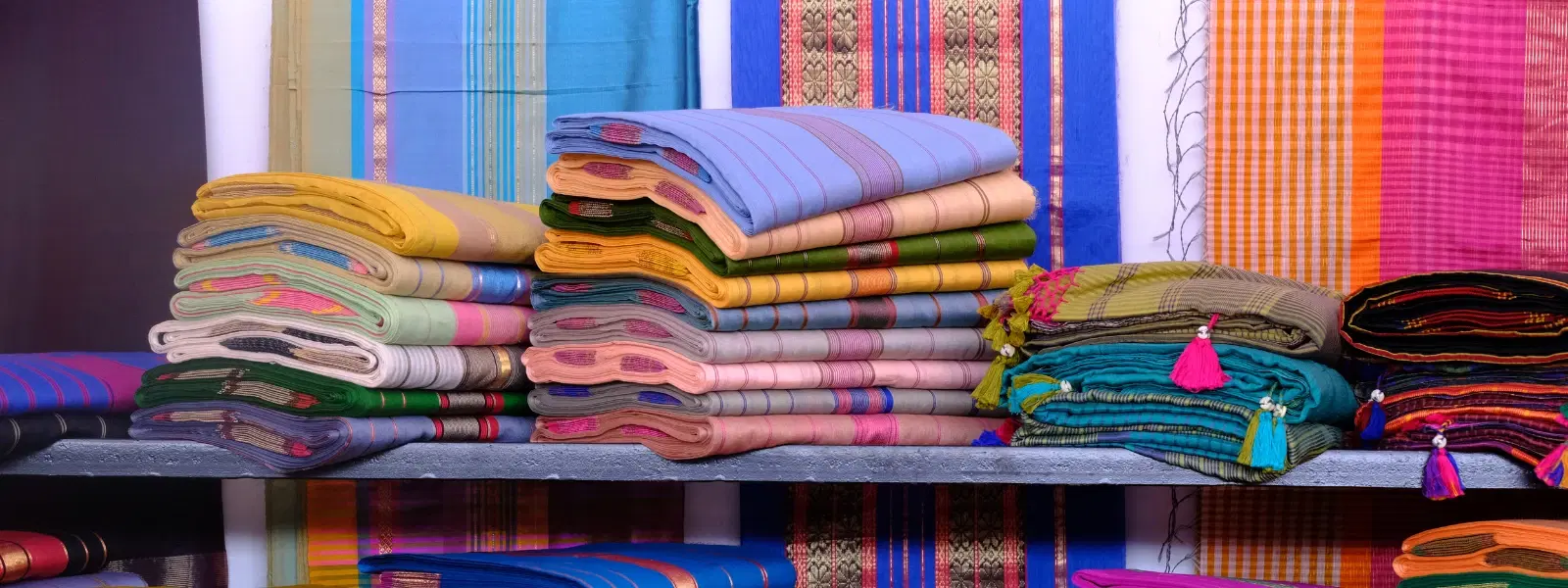
Apparel & Accessories
•03 min read
-961388ae-2e6f-4656-ab76-3780ab6a42c4.png&w=3840&q=75)
The saree is one of the most iconic embodiments of traditional Indian attire. With a history stretching back thousands of years, it represents grace, culture, and self-expression. In this guide, you will learn what is a saree, explore its diverse types, discover how to wear a saree with ease, and understand its cultural and modern significance.
A saree is a long, unstitched piece of fabric usually ranging from 5 to 9 yards. It is draped elegantly around the body, making it suitable for every occasion—from casual daywear to grand celebrations. As a symbol of traditional Indian attire, it conveys cultural heritage, identity, and timeless elegance.
The saree ensemble is made up of three key parts:
The saree fabric: This is the main unstitched garment.
The blouse (choli): A fitted top worn underneath.
The petticoat: A skirt used to secure the drape.
India boasts a wide range of types of sarees that reflect its rich regional diversity. In northern regions, you find sarees known for intricate brocade work. Southern areas gift us with sarees made from renowned silk, while the eastern parts offer sarees adorned with mythological motifs. Western styles shine with vibrant tie-dye patterns.
The fabric of a saree plays a key role in its appeal:
Silk sarees: Luxurious choices often reserved for weddings and festivals.
Cotton sarees: Lightweight and comfortable for everyday wear.
Georgette and chiffon sarees: Perfect for modern silhouettes and flowing drapes.
-b4b0ee01-7102-4782-b4cc-72450eaeb58c.png&w=3840&q=75)
Learning how to wear a saree can be enjoyable and empowering. Begin by tucking one end of the fabric into your petticoat. Wrap it around your waist and create uniform pleats. Finally, drape the loose end, also known as the pallu, over your shoulder to complete the look.
Different saree draping styles can transform your appearance:
Nivi style: The classic drape widely recognized across India.
Bengali style: Characterized by broader pleats and a gracefully styled pallu.
Gujarati style: A distinctive method with the pallu draped from the back to the front.
Pro Tip: Mastering the Pleats
Creating neat pleats is the secret to a refined saree look. Safety pins can help in keeping your pleats in place throughout the day, adding polish to your overall style.
Sarees are much more than fabric; they are a profound cultural statement. This attire has been passed down through generations and is integral to festivals, weddings, and rituals. Every style tells a story of regional identity and heritage.
Today, sarees continue to evolve. Contemporary trends include fusion sarees that merge traditional designs with modern cuts and fabrics. Pre-stitched sarees and innovative saree blouse designs such as off-shoulder, backless, and crop-top styles offer fresh takes on a classic look. These modern adaptations ensure the saree remains a versatile choice for today’s style-savvy individuals.
Choosing the perfect saree can be delightful once you know what to look for:
Occasion based: Opt for luxurious fabrics like silk for special events and lightweight fabrics like cotton for everyday wear.
Fabric quality: Inspect the weave, texture, and durability of the fabric.
Regional variety: Explore different regional styles to appreciate unique craftsmanship.
-68be3552-55c1-4572-9cbe-6f32de66a775.png&w=3840&q=75)
No outfit is complete without the right accessories. Matching traditional jewelry enhances the look, while comfortable yet stylish footwear such as sandals or traditional juttis complements the overall ensemble. A chic clutch or potli bag can also add a dash of elegance.
Remember, wearing a saree is all about expressing your identity and embracing tradition with a modern twist. Experiment with different saree accessories and modern touches to create a look that is uniquely yours.
A saree is a long, unstitched piece of fabric draped around the body, paired with a blouse and a petticoat. It stands as a symbol of elegance and cultural heritage in India.
A sari is a traditional Indian garment made from a single piece of fabric, creatively draped to form a graceful outfit.
A saree is a timeless attire worn by women, crafted from fabrics like silk, cotton, or synthetic materials, and loved for both its versatility and cultural importance.
The unstitched fabric that allows multiple draping styles is the hallmark of a saree, reflecting regional diversity and deep-rooted tradition.
Not at all. When worn with respect and care, a sari is celebrated as a beautiful representation of Indian culture.
The saree remains a compelling symbol of India’s cultural richness and evolving style trends. From understanding what is a saree to exploring various types, mastering draping techniques, and embracing modern trends, this guide highlights its role in self-expression and heritage. As you consider adding this timeless attire to your wardrobe, enjoy the blend of tradition and modernity it brings, reflecting a style that is both elegant and empowered.